Designed by Robert Belli and Henri Robert, Le Crématoire of La Chaux-de-Fonds was inaugurated in 1910. All the decorative works were carried out by the Cours supérieur d'art et de décoration, directed by Charles L'Eplattenier. It is a singular place where art and spirituality come together and a prime example of Art Nouveau.
The plans for the crematorium in La Chaux-de-Fonds started after the revision of the Neuchâtel law on burials made cremation official in 1894. The construction work began in August 1908, the crematory was put into operation in November 1909 and was officially inaugurated on June 27, 1910. A monumental staircase leads to a porch with a semi-circular arch as well as two statues made in 1928 by Charles L'Eplattenier. A bronze ephebe with arms raised towards the sky, entitled "Toward the Ideal" and created in 1909, is placed at the top of the roof of the crematorium. The side facade is decorated with mosaics, also created by the painter in 1926 and 1927.
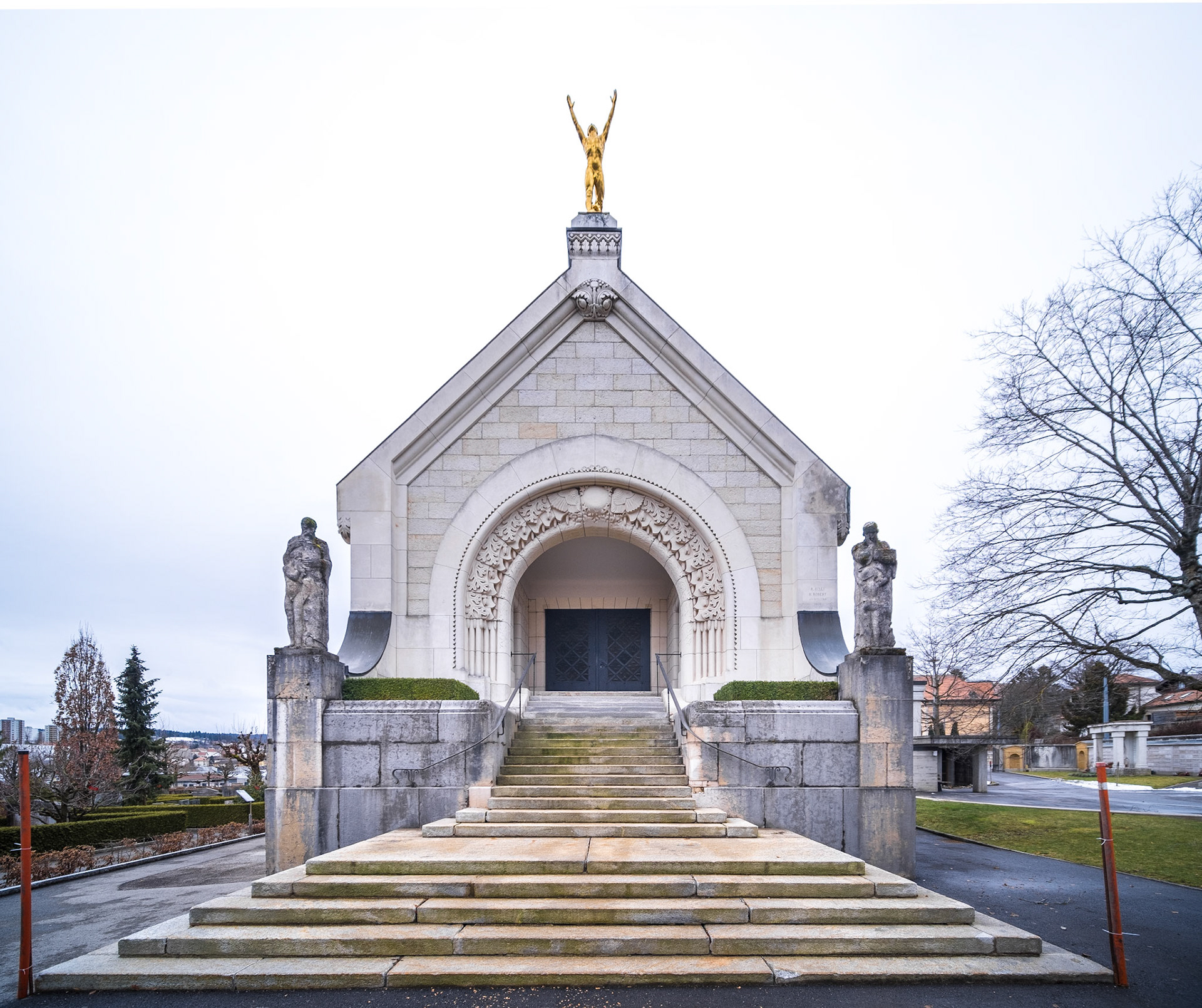
facade of the crematorium
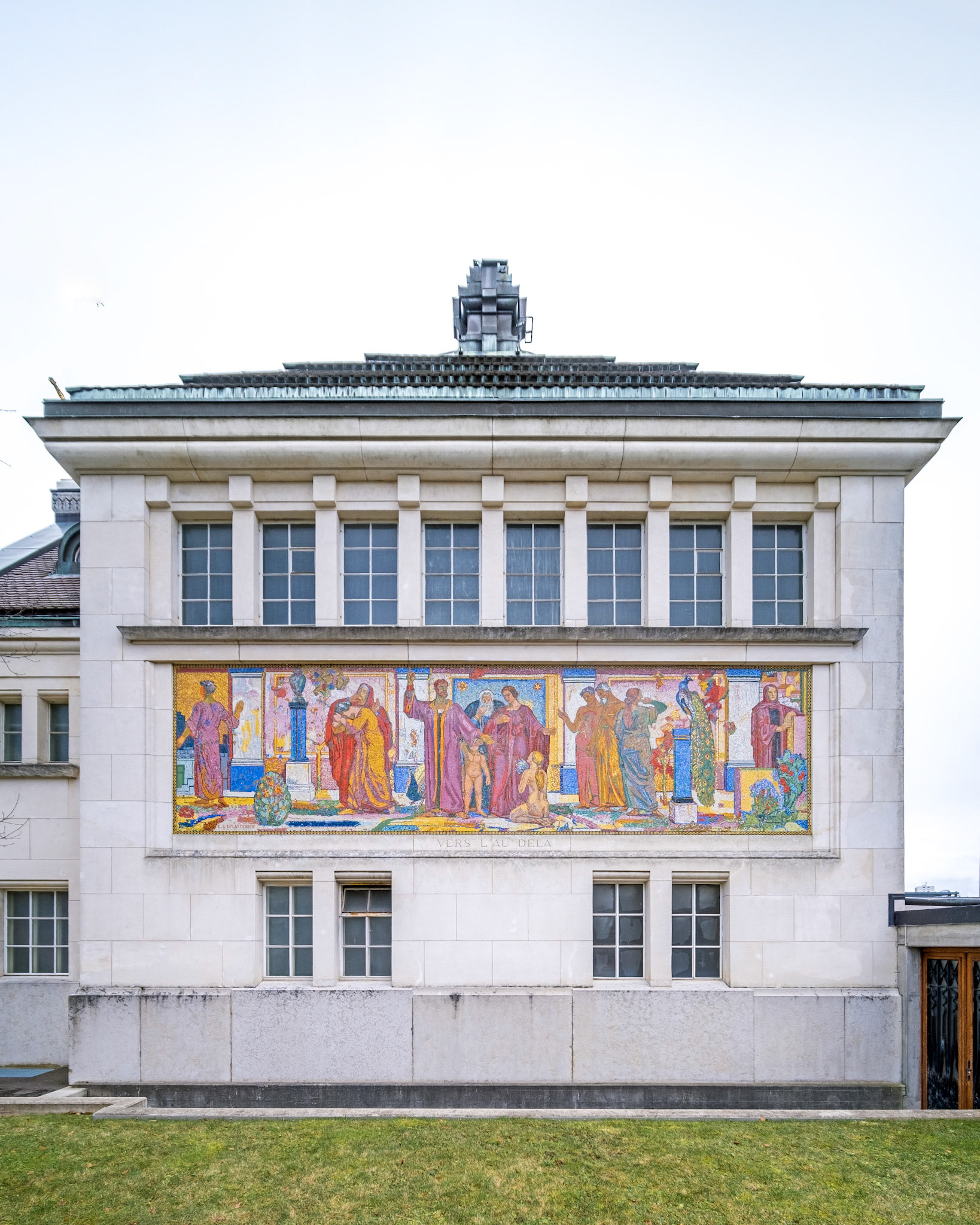
side facade with mosaics from 1926/1927
In 1912, the murals were executed by by Charles L'Eplattenier. The one facing the entrance is entitled "La Mort, la Douleur, et la Paix" (Death, Pain, and Peace). The catafalque in copper is the work of Louis Houriet, Charles Harder, Arnold Montandon and Florian Amstutz. The two oil lamps framing the catafalque were made of embossed metal by Jeanne Perrochet in 1927. The mosaics that crisscross the floor with geometric patterns were made by Louis Perret.
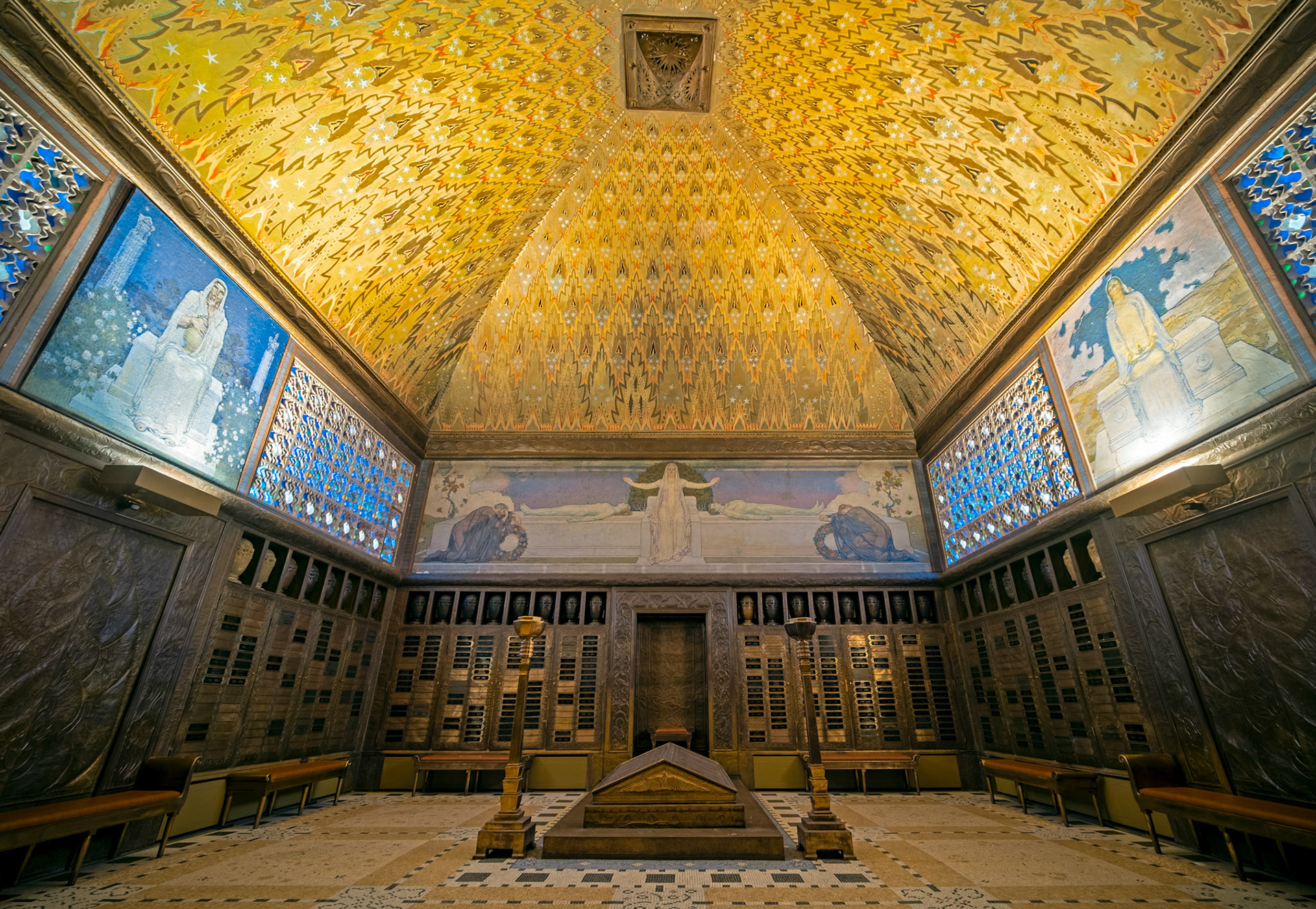
ceremonial hall
Designed by Léon Perrin, the stained glass windows on both sides of the building were executed by Octave Matthey between 1909 and 1910. Each stained glass window is composed of thirty-two squares decorated with geometric motifs. The mural above the exit doors is "La Purification par le Feu" (Purification by Fire).
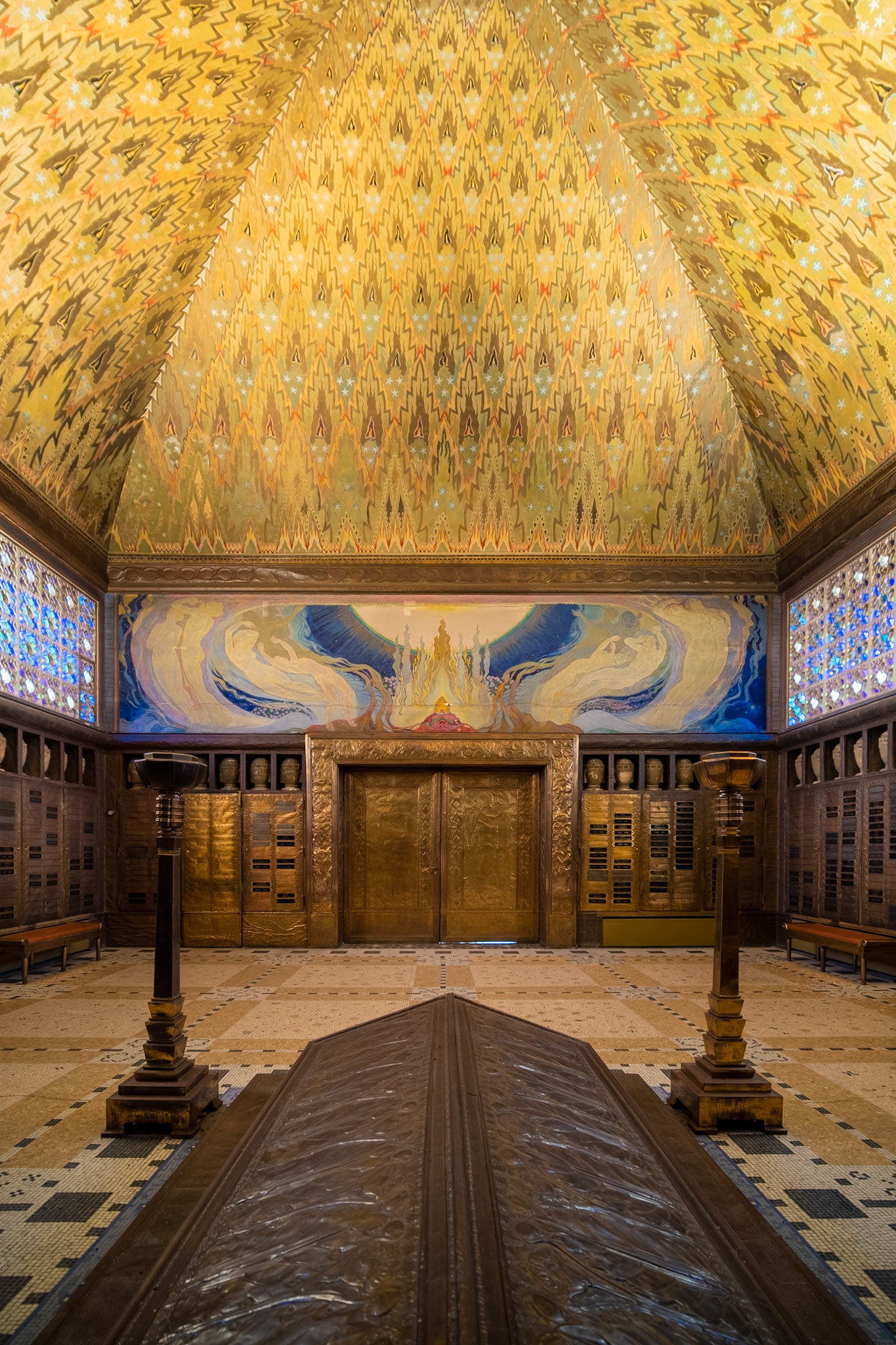
mural above the exit doors: "La Purification par le Feu"
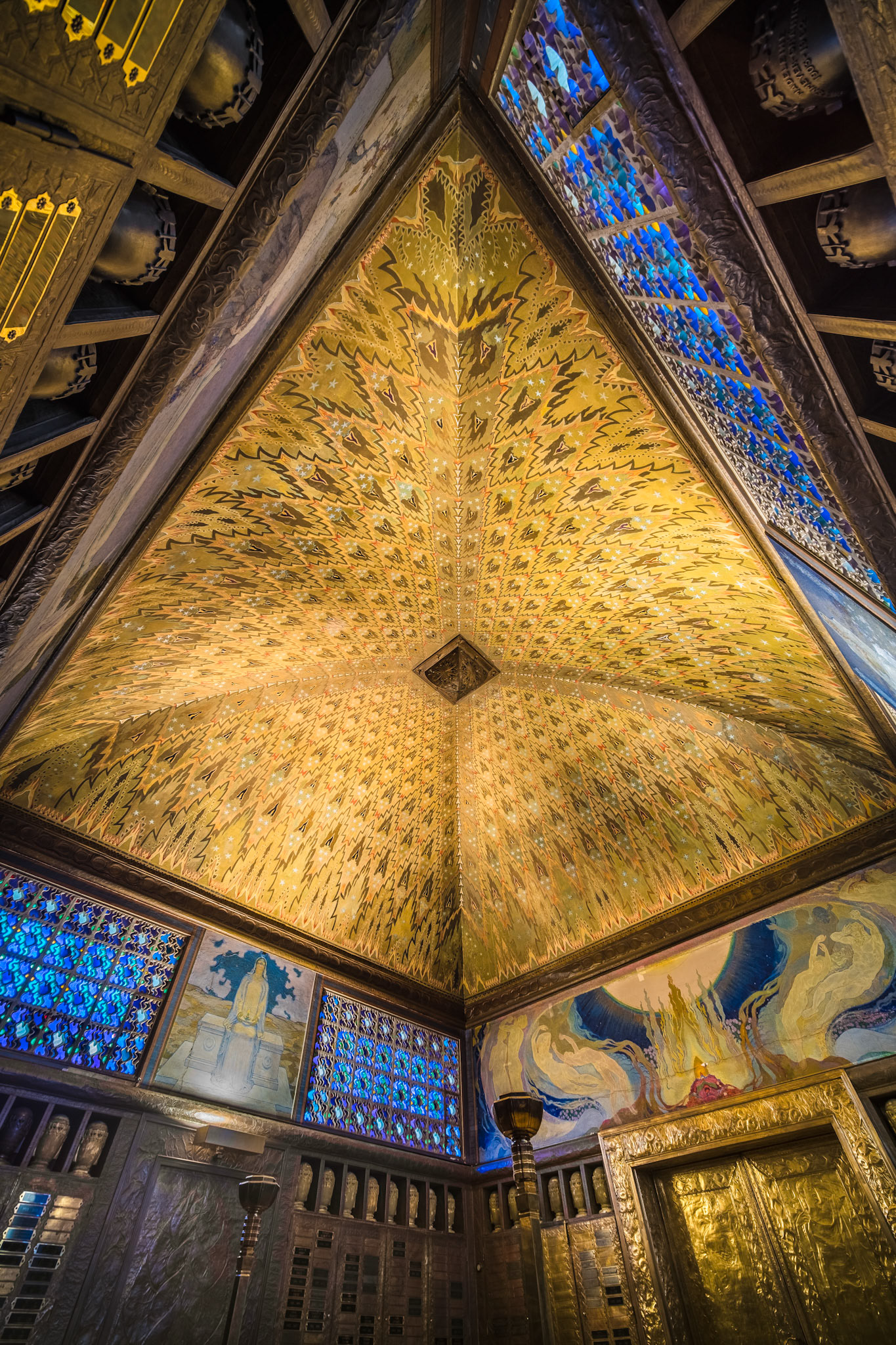
Crématoire, La Chaux-de-Fonds - ceiling
The ceiling of the ceremonial hall was painted between 1909 and 1910 by Georges Aubert. It evokes the fire of cremation through stylised flames converging on the keystone hidden by a metal cover.
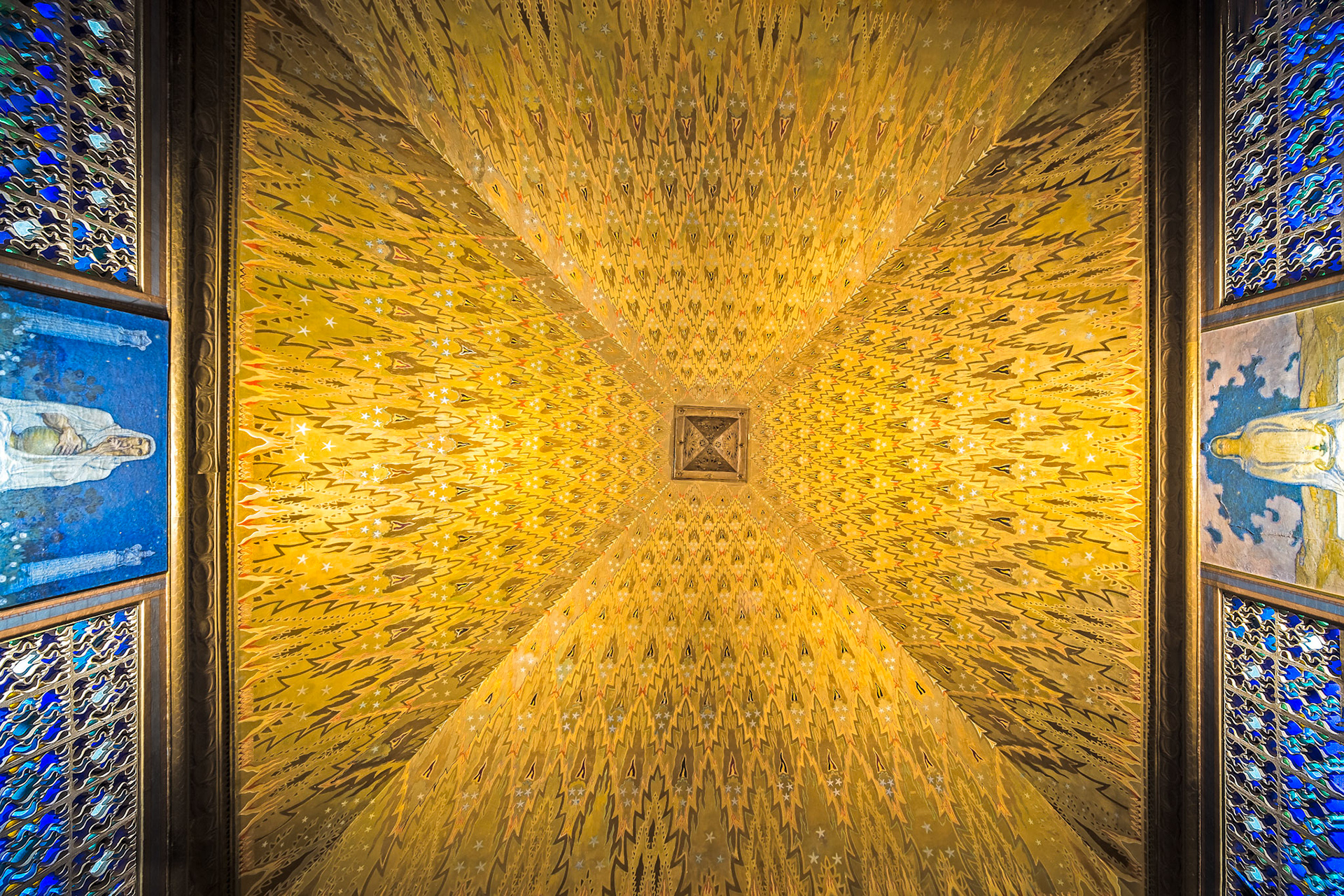
ceiling of the ceremonial hall painted by Georges Aubert
You may also like